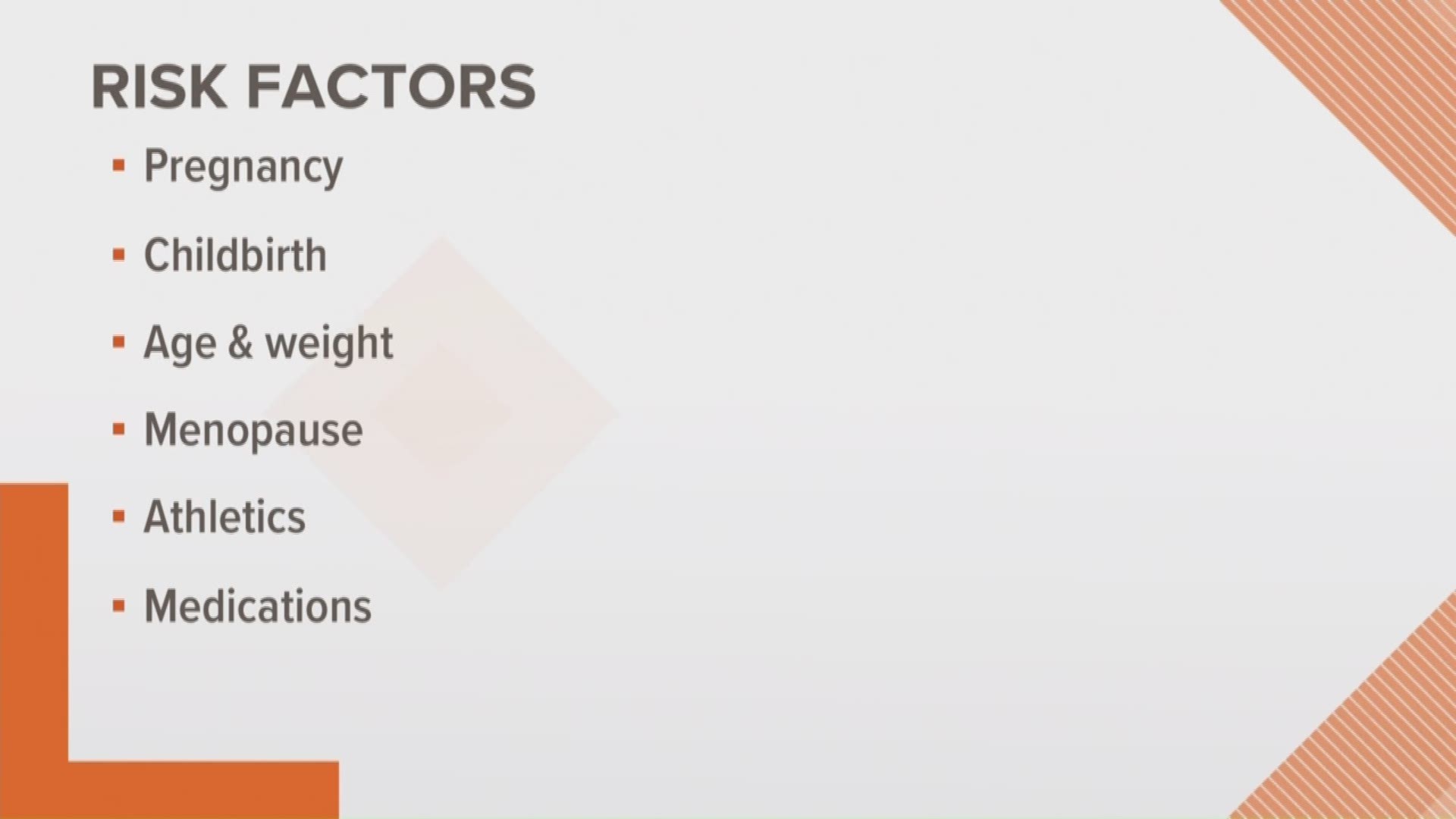DENVER — Urinary incontinence can be a difficult thing for both men and women to discuss. According to Medscape, even though this condition can be underreported, it is estimated 10-13 million people in the U.S. have urinary incontinence, with females being two times more likely to have this condition.
What is urinary incontinence (UI)?
Urinary incontinence is when a person leaks urine or has a loss of bladder control. The kidneys make urine, empty into the bladder and then the muscle at the bottom called the sphincter tightens and opens to allow you to urinate. Stress incontinence is the most common type. It can be caused by sneezing, laughing, or exercising, or any time the bladder muscle tightens quickly.
The weak pelvic floor muscles cannot close all the way, so you leak urine. Urge incontinence, also known as “overactive bladder,” is when a person may have a sudden urge to urinate but can’t hold it long enough to make it to the bathroom. You can also have a mix of both types of incontinence.
The estimates for how many people have UI are variable. It is embarrassing for people to talk about, there is a stigma around it, and most people don’t get professional help.
Current estimates indicate that about half of all women will have it, and even up to one in four high school and/or college female athletes will have stress incontinence.
Risk factors for developing UI include:
- Pregnancy
- Childbirth
- Older age
- Menopause
- Athletic activity
- Surgery
- Overweight
- Medications
Will every woman get UI during and after pregnancy?
Anything that puts pressure on your pelvic floor can cause you to have issues. Just being pregnant can stress your pelvic floor. The type of delivery, especially a normal delivery may double your chances as compared to a c-section. After childbirth, there are a lot of hormonal changes and your body is healing after the trauma of childbirth. But, if your symptoms continue past 6 weeks after delivery, you should get checked out.
Treatment options
It is important to determine exactly what your specific cause is for UI. Is it weak pelvic floor muscles? You can get physical therapy to strengthen those muscles and do a pelvic floor training exercise called Kegel. There are injections, medications, nerve stimulators or devices like pessaries which help support the bladder and the pelvic floor.
Surgery is also available to correct pelvic floor issues and UI. One of the surgical treatments for UI is a sling procedure which uses mesh. There is a lot of controversy right now about whether mesh should be used as a surgical treatment.
In the U.K., a ban was placed in July 2018 on using the synthetic mesh. In the U.S., the Food and Drug Administration is watching this closely, with 1 out of every 50 women having complications after using this synthetic material to help correct urinary incontinence.
Basically, talk to your healthcare professional about all the potential risks and benefits to any type of surgical treatment for this. Ultimately, there are a lot of different ways in which UI can be treated. Don’t be afraid to ask your healthcare professional about what can be done.
Follow 9NEWS Medical Expert Dr. Comilla Sasson on Facebook and Twitter. Have a medical question or health topic idea? Email Dr. Comilla at comilla.sasson@9news.com
SUGGESTED VIDEOS | Local stories from 9NEWS

